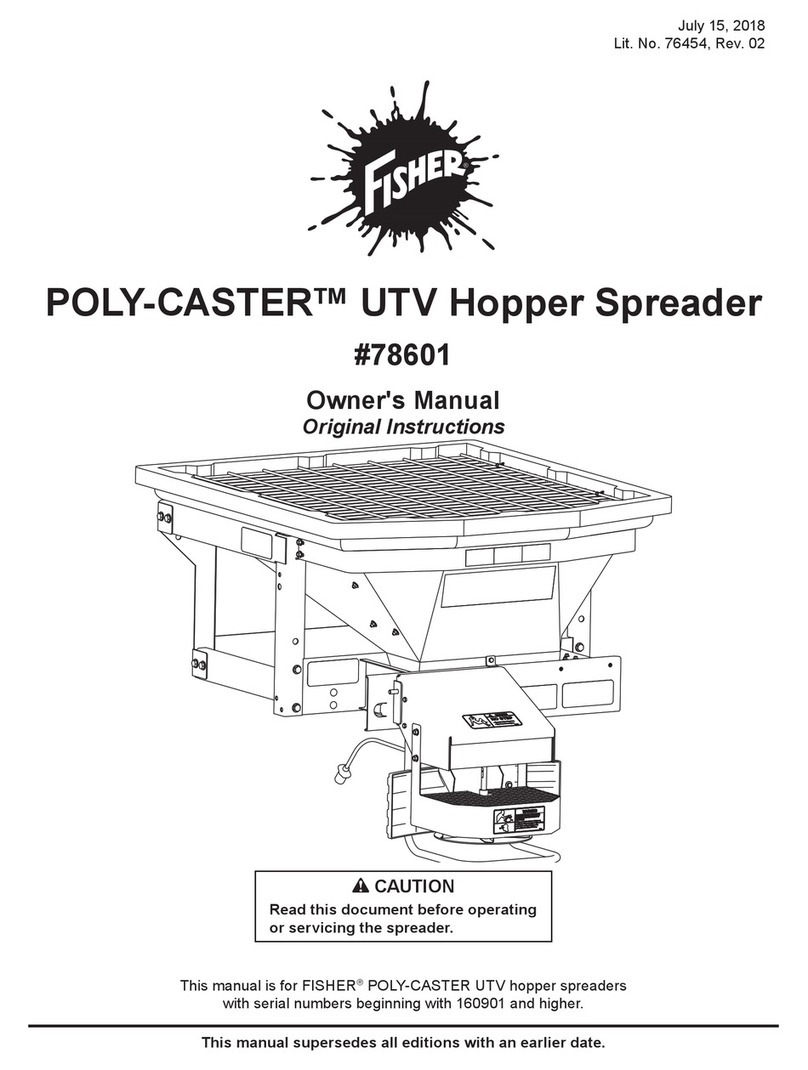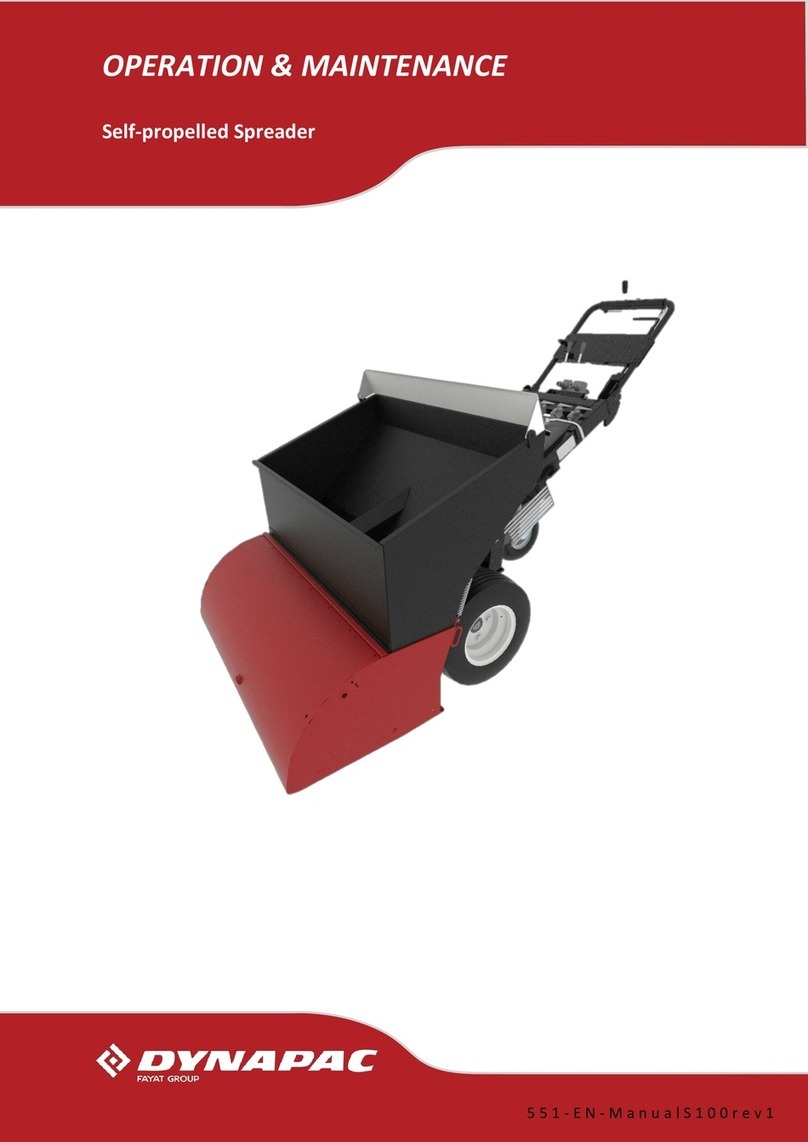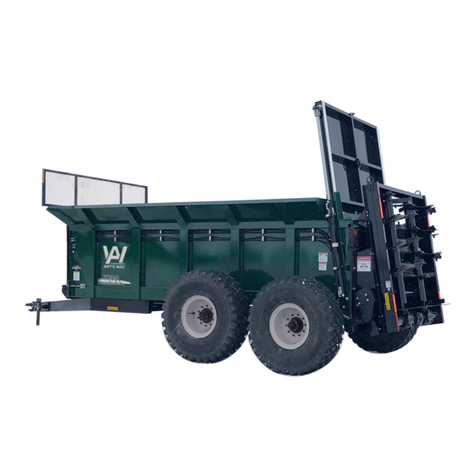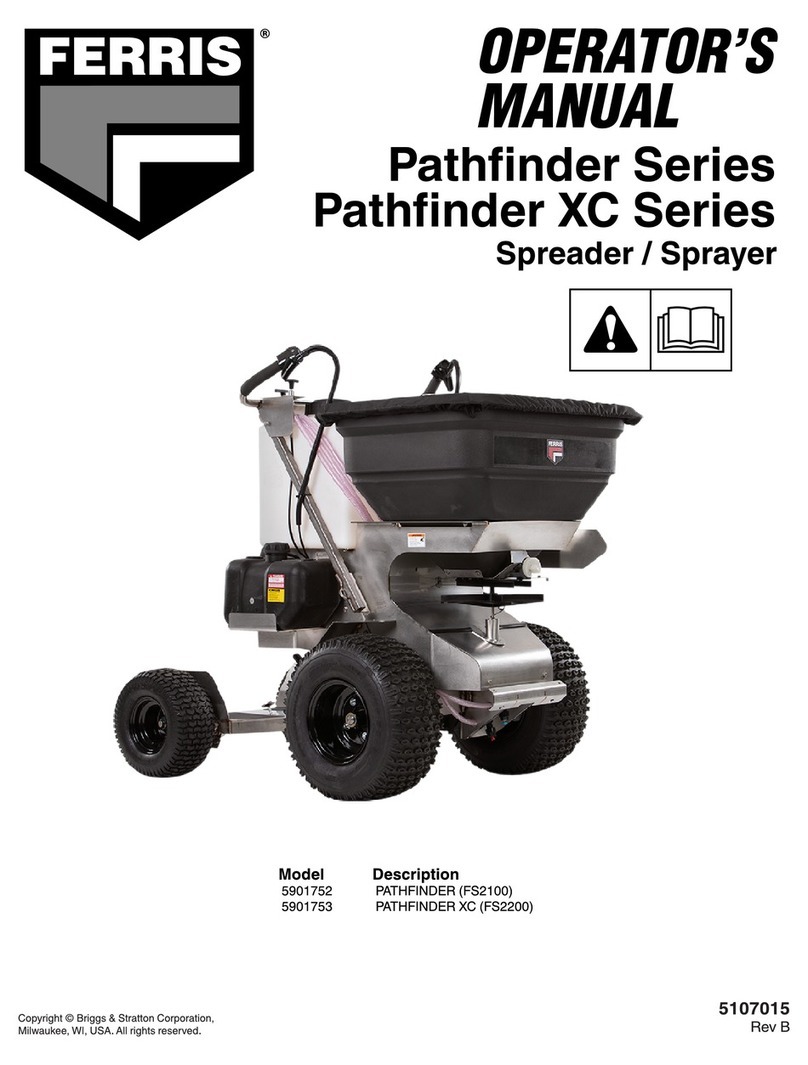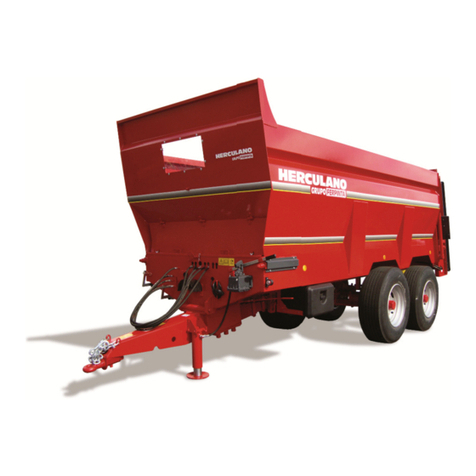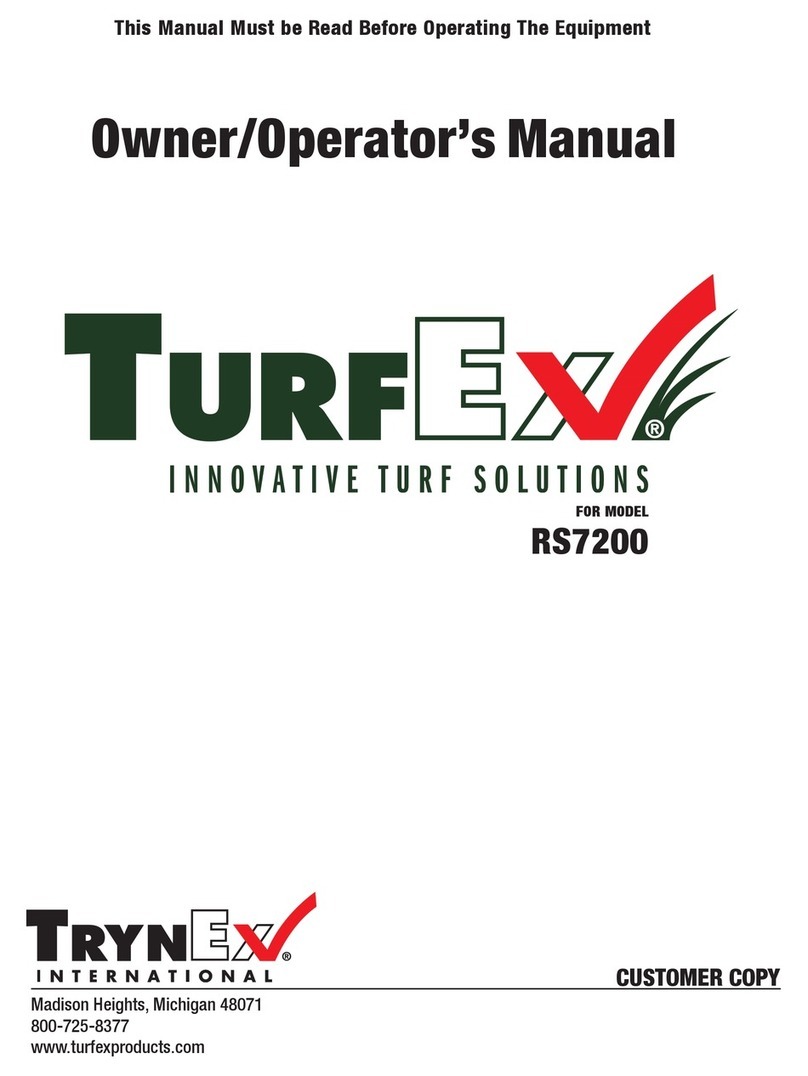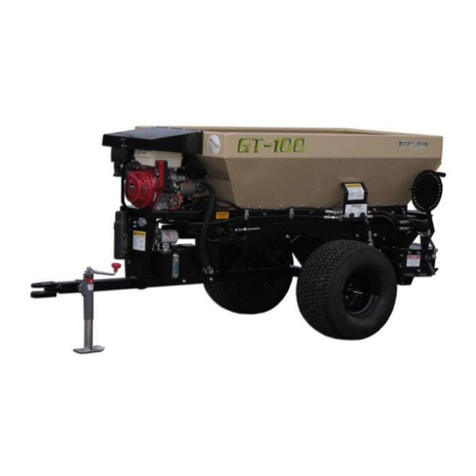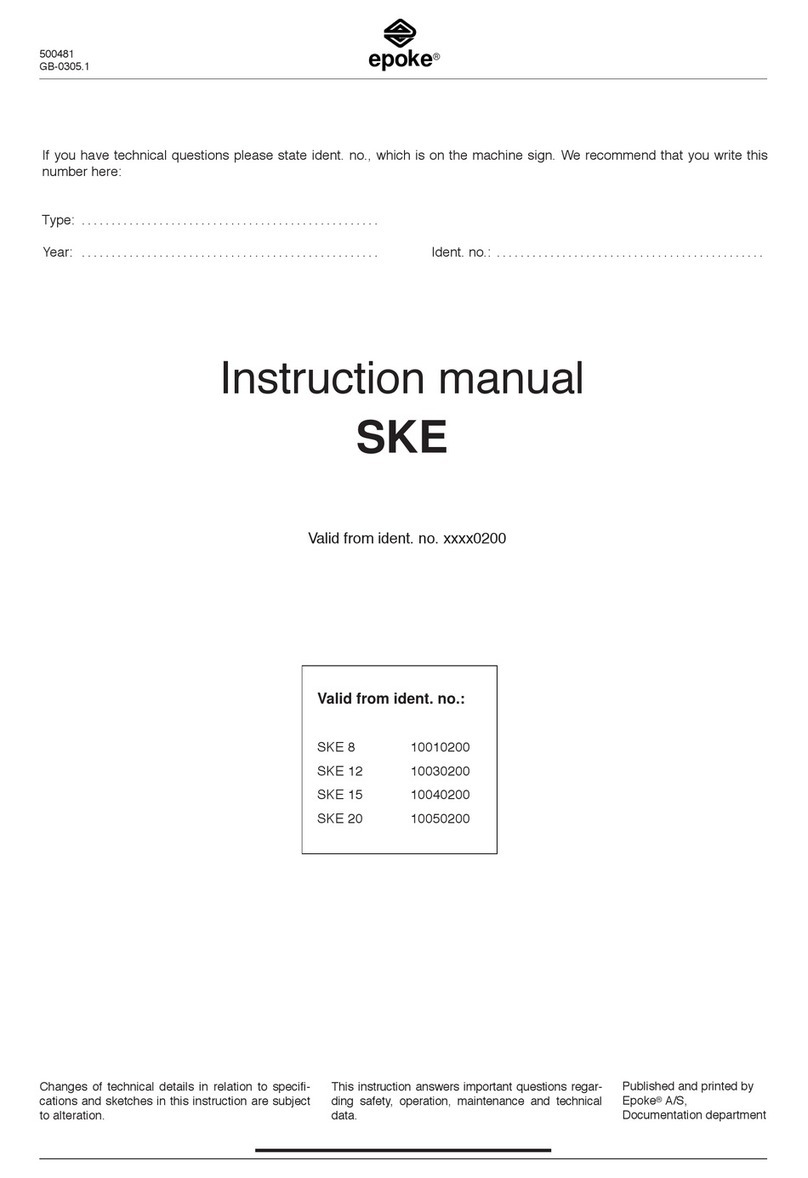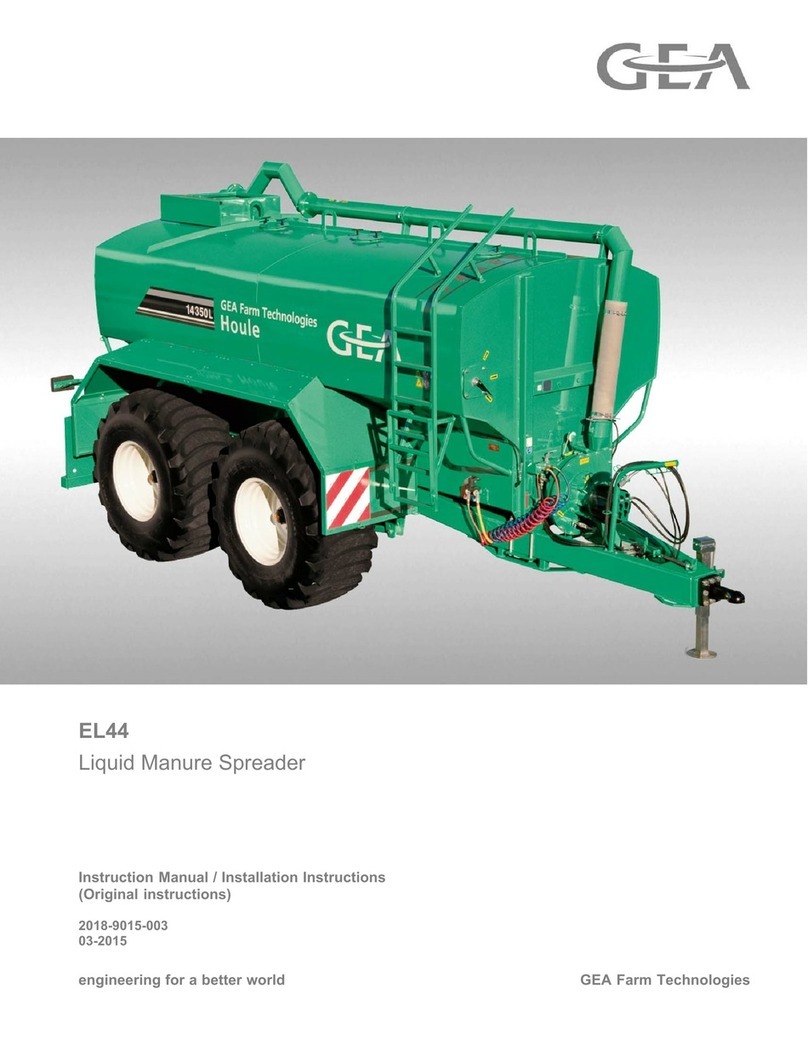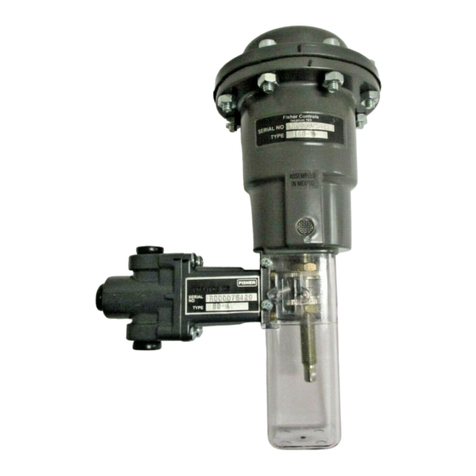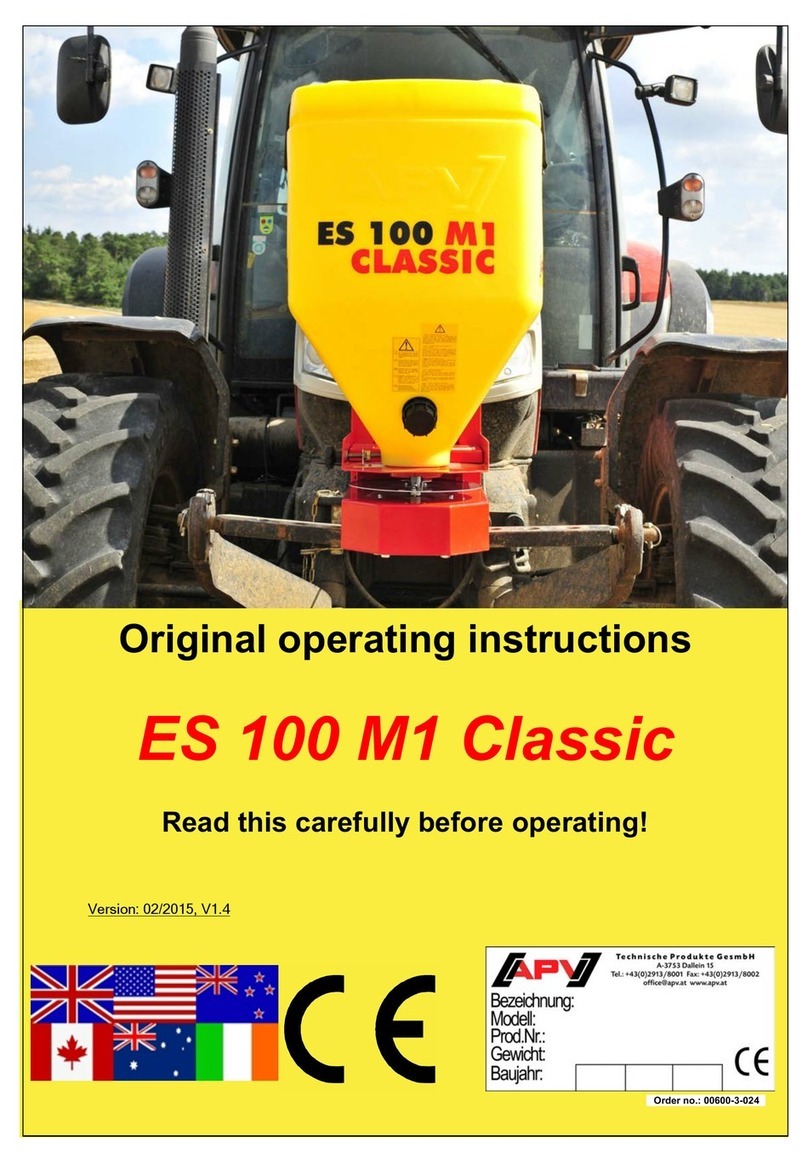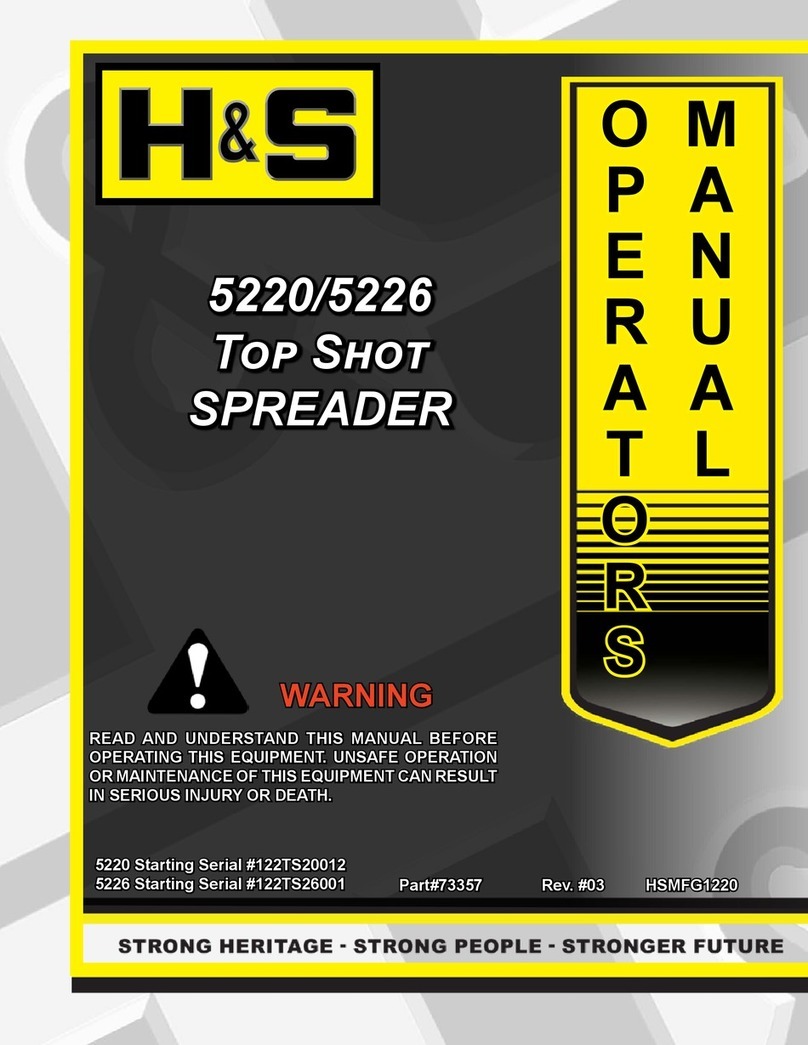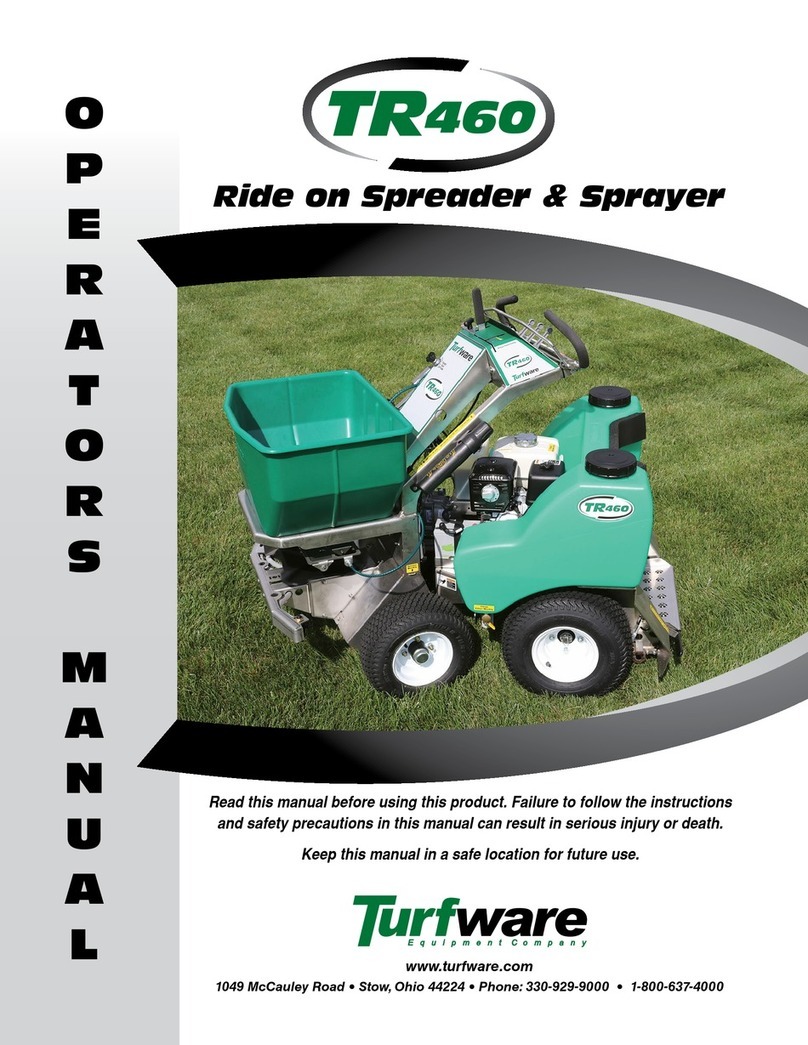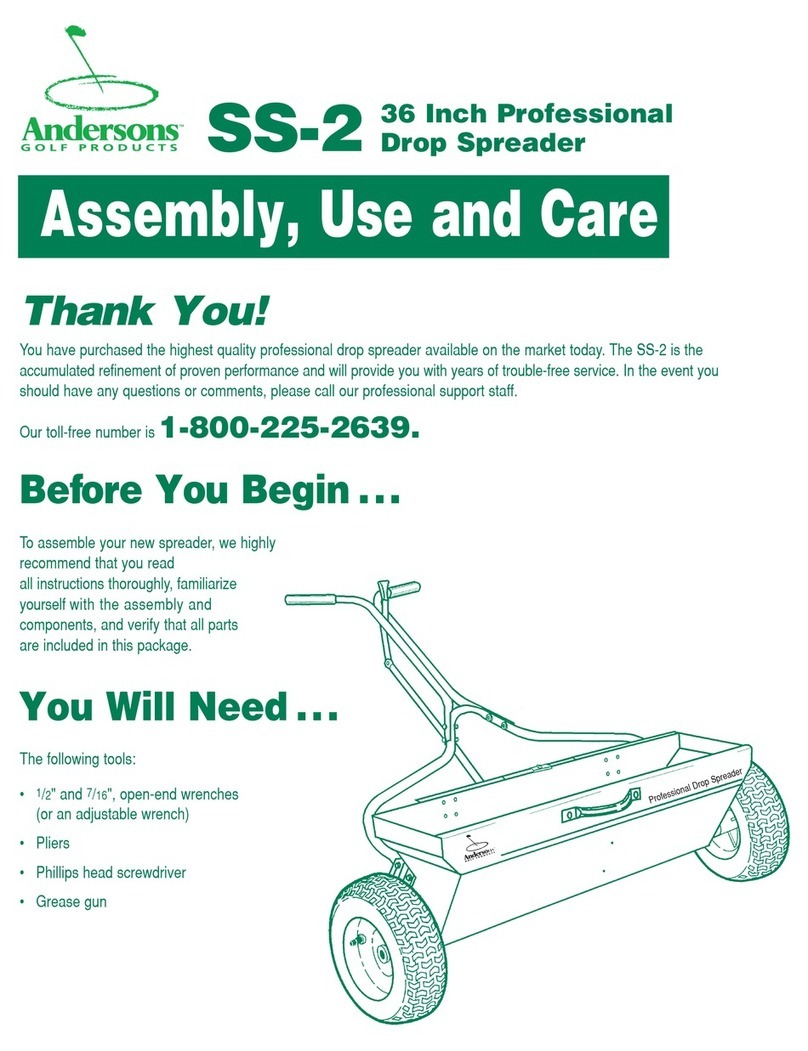
Speed Restrictions
The tyres and machine have been designed to operate at between 5mph - 20mph.
NOTE: 1. Spread rates are calculated at 5 to 20mph (8-32kph) for optimum performance.
2. The maximum towing speed (including not spreading) = 20mph (32kph).
As the vehicle incorporates neither suspension nor brakes - the maximum towing speed for
the machine when spreading is 20mph and all spread rates have been calculated up to this
maximum speed.
Towing: The Legal Requirements on the Public Highway
The machine has been designed to conform to the Road Vehicles (Construction and Use)
Regulations 1986 relating to trailers and gritting trailers for use on the public highway. In the
case of light trailers, weighing less than 3500kg maximum laden weight, there is no specied
relationship in UK law between the weight of the towing vehicle and the weight of the trailer.
The machine incorporates lights which conform to the Road Vehicles Lighting Regulations
1989 as amended, and so make it legal for use on the public highway. It should be noted that
gritting trailers are exempt from certain regulations set out in the Road Vehicles (Construction
and Use) Regulations 1986.
Furthermore there is a European Directive 2007/46/EC, enforced in the UK by the Vehicle
Certication Agency (VCA). This Directive is a legal requirement that all vehicles used on the
road conform to a set of standardised design criteria - where vehicles such as trailers must be
Type Approved to demonstrate that they are t for safe use on the highway. Turbocast 800
has been issued a European Community Whole Vehicle Type Approval (ECWVTA).
M1 Category Vehicles
For M1 category vehicles (i.e. Motor vehicles used for the carriage of passengers and
comprising not more than eight seats in addition to the driver's seat) the maximum permissible
trailer weight is quoted by the vehicle manufacturer. Alternatively, the vehicle manufacturer
may provide a maximum gross train weight (train weight = the laden weight of the trailer plus
the laden weight of the towing vehicle). If this is exceeded it is possible that the Courts or
Insurance Companies may take the view that it constitutes a danger.
Light Goods Vehicles
The maximum laden weight of a trailer that may be towed by a light goods vehicle depends
on both the stated gross train weight of the towing vehicle and the vehicle manufacturer's
recommended maximum permissible trailer weight. Neither the maximum permissible trailer
weight or the maximum gross train weight (i.e. The laden weight of the trailer plus the laden
weight of the towing vehicle) should be exceeded. It is possible that the stated gross train
weight is less than the sum of the stated maximum permissible laden weight of the towing
vehicle and the stated maximum permissible laden trailer weight. In this case the towing
vehicle and the trailer must be loaded so that each does not exceed its individual maximum
limit and the sum of both does not exceed the maximum gross train weight.
Breakaway or Safety Cable
There are no service brakes on the machine so a safety cable has been tted so that in the
unlikely event of an accidental de-coupling the machine is retained to the towing vehicle.
3
1 Introduction
